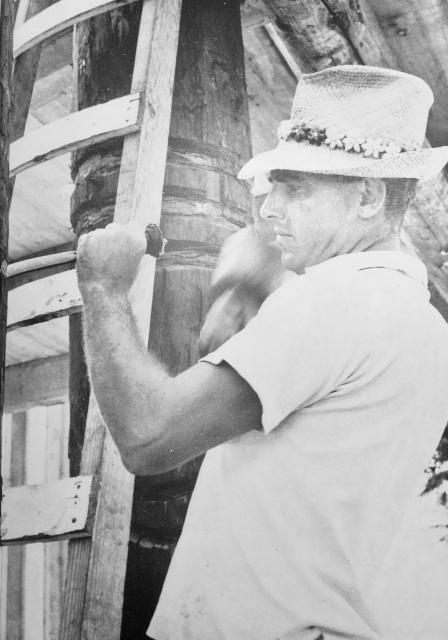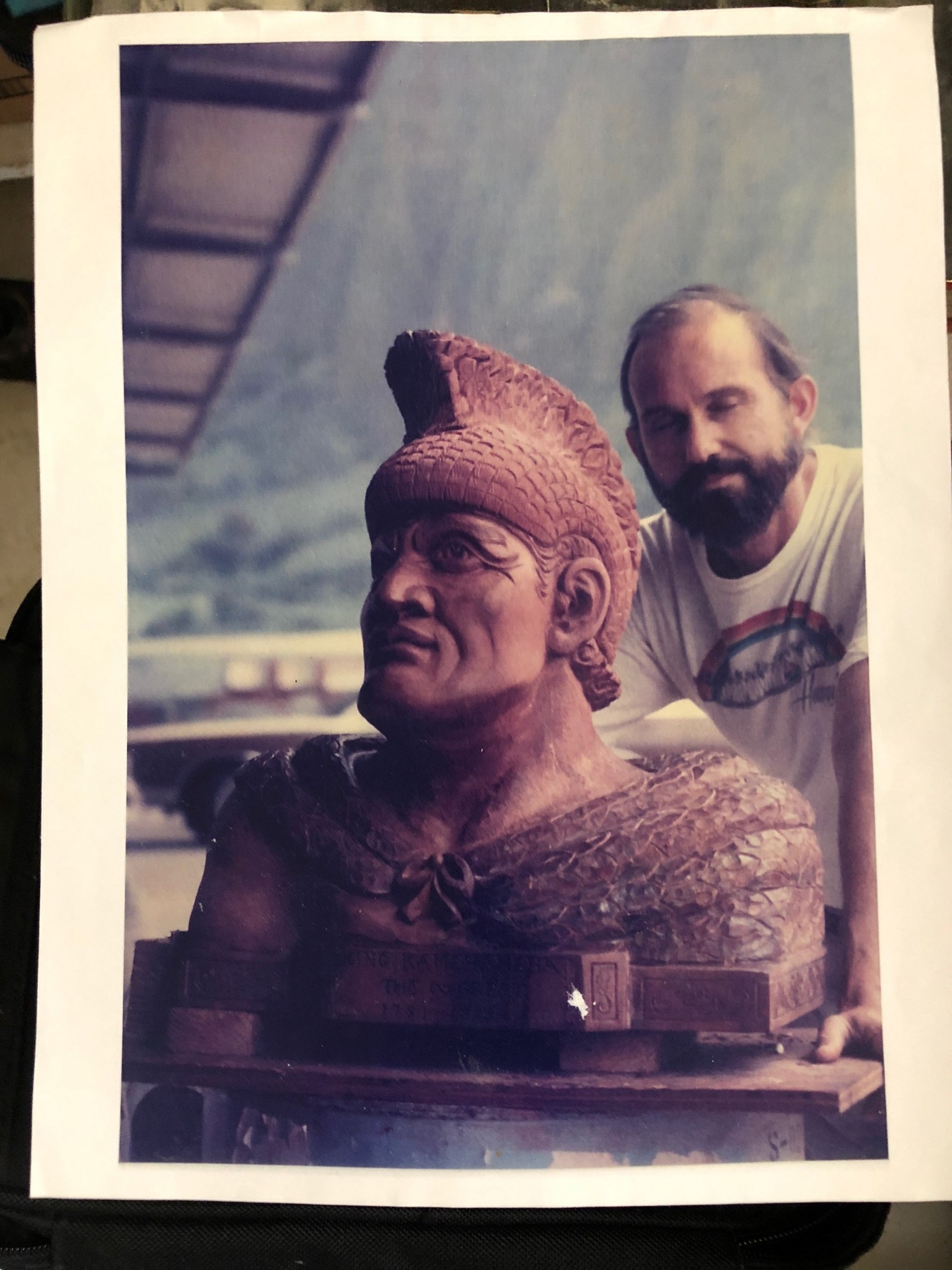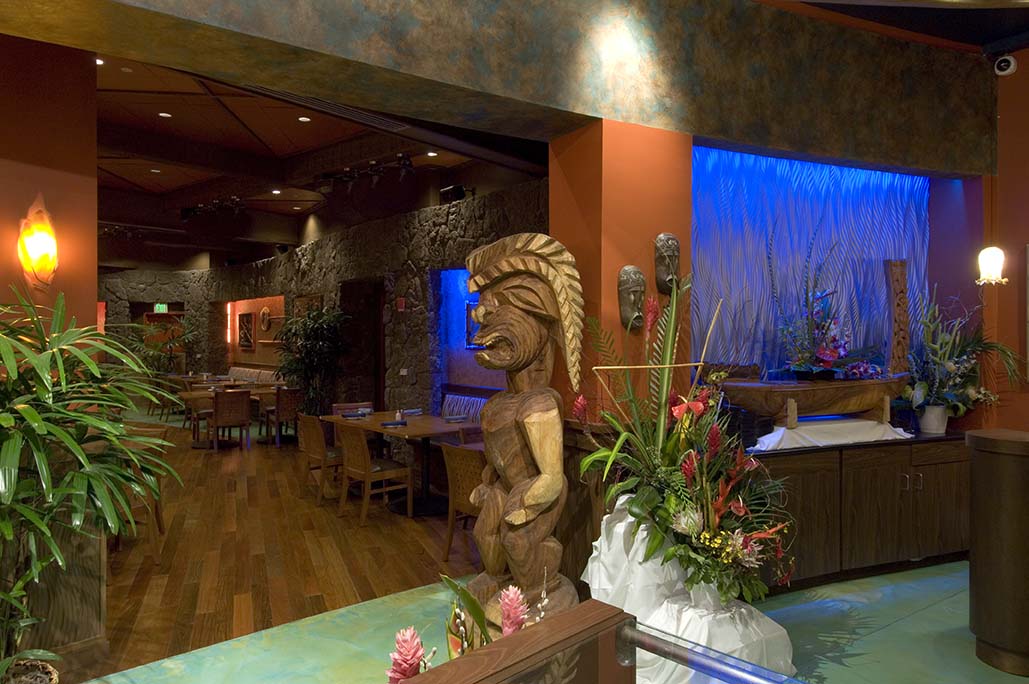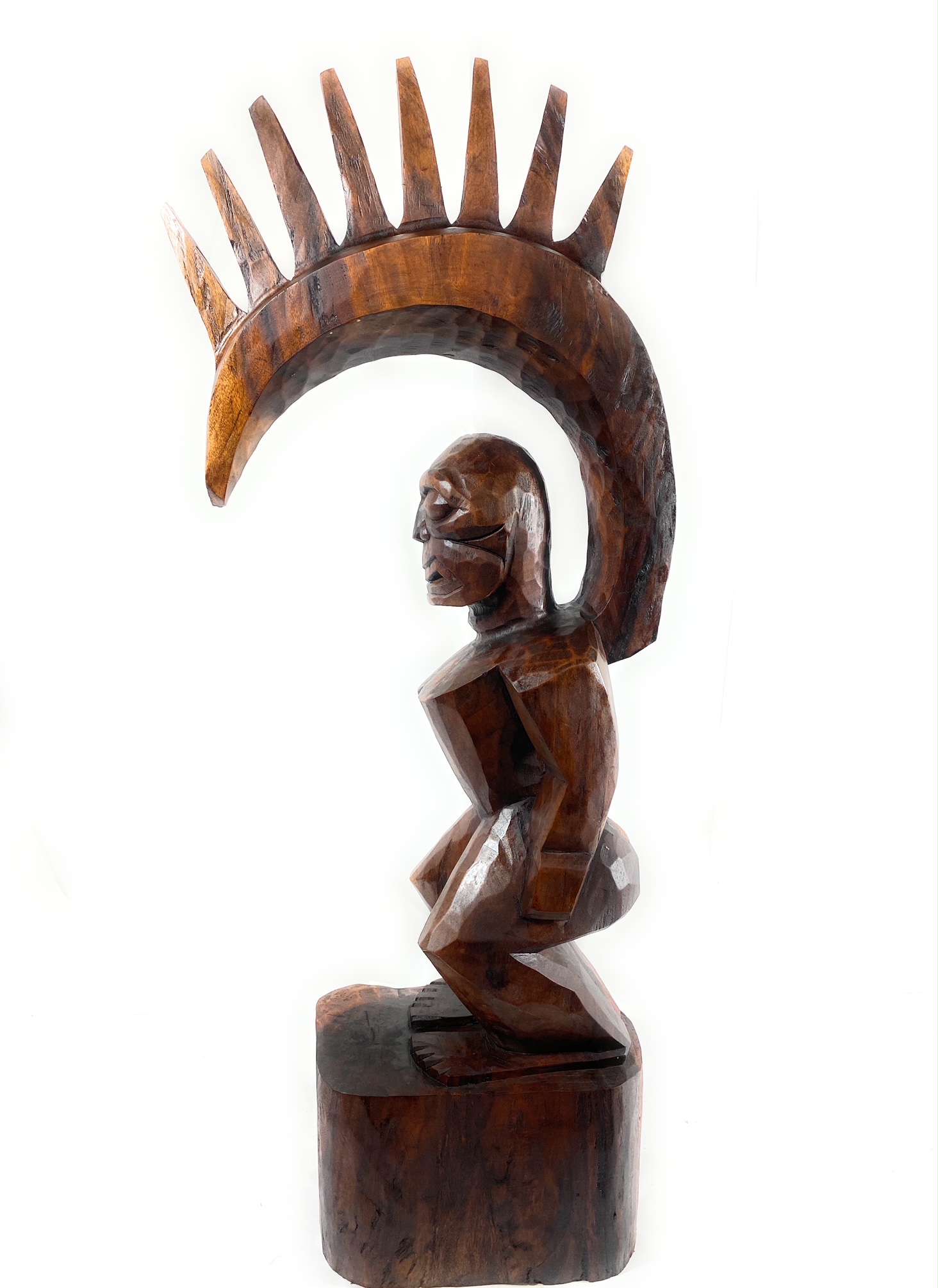Tiki Hawaiian art combines Polynesian traditions with modern interpretations, from traditional carving to modern art movements. Art fans all over the world now love this art form that originated in Hawaii and the Pacific islands.
Discover the fascinating story of Tiki artwork, its cultural importance, and how it has changed in the art world. Explore the charm of Hawaii tiki art, its beauty, and the enduring appeal of Tiki wall art. Let's embark on this mesmerizing exploration together.
Tiki artwork is a popular modern style inspired by Polynesian cultures in Hawaii and the Pacific islands. This unique art has evolved in the South Pacific, combining traditional techniques with modern interpretations of tiki symbolism. This piece delves into the historical progression and evolution of tiki fine art. It also discusses its escalating prominence in the world of art...

The Origins of Tiki Artwork
Tiki talent is deeply rooted in the Polynesian cultures of Hawaii, Tahiti, and other Pacific islands. In these cultures, the word "tiki" represents the carved wooden figures that people used as religious and cultural symbols. People often carved these figures from wood or stone and believed that they possessed spiritual powers. People decorated homes, temples, and important structures with vintage Tiki art, and they used it in ceremonies and rituals.

The evolution of Tiki design began in the early 20th century in America, specifically in California and Hawaii. It emerged as a unique form of artistic expression that drew inspiration from Polynesian culture and mythology. Initially, the Pacific Islander aesthetics heavily influenced Tiki decor, incorporating intricate carvings and bold to emphasize the cultural significance, vibrant colors. However, over time, it evolved into a more diverse art form that encompassed various styles, techniques, and mediums.
The popularity of tiki-themed restaurants and bars played a major role in the development of Tiki carving. These places tried to make the South Pacific feel come alive, and Tiki history was important in making that happen. The organizers commissioned artists to create large-scale murals, sculptures, and other decorative elements that celebrated Polynesian culture. The demand for Tiki masks and tiki totems grew, so artists tried new materials and methods to meet their clients' needs.

Another key aspect in the evolution of Tiki statue was the influence of contemporary art movements. French Polynesia mixed traditional Pacific Islander techniques with modern art styles like cubism, surrealism, and abstract expressionism. New artistic influences mixed with traditional and modern styles, making Tiki art more visually diverse and interesting.
Moreover, the popularity of Tiki art spread beyond restaurant and bar decors. It began to appear in other forms of visual media, such as magazines, album covers, and advertisements.
Tiki art gained more visibility, prompting artists to innovate and enhance it. It became popular and started selling in America. People associated its pictures with relaxation, fantasy, and tackiness.

Furthermore, the evolution of Tiki art also witnessed an increased interest in its historical and cultural context. As Tiki art became well-known, experts and collectors started researching its beginnings and importance.
People's understanding and appreciation of Polynesian art improved. This led to the creation of more accurate and genuine Tiki art. The cultural legacy of Polynesia influenced the Tiki art.

Tiki art's evolution is a dynamic journey with different influences, styles, and mediums. Tiki art started in tiki-themed places and became popular in media. It explores culture and keeps changing, attracting people with its unique and colorful style.
As Polynesian cultures spread to other parts of the world, so did tiki art. In the 20th century, tiki art became popular in the United States, particularly in California and Hawaii. Artists began to incorporate tiki motifs and styles into their work, creating a fusion of traditional and modern art. Mid-century style influences this modern tiki art, featuring bright colors and geometric designs.
The Art of Tiki Today
Today, tiki art has become a beloved and sought-after style in the art world. Artists continue to draw inspiration from traditional Polynesian tiki art, but also add their own unique twists and interpretations. You can find Tiki art in a variety of mediums, including paintings, sculptures, and even clothing and home decor. Enthusiasts of Tiki art gather vintage Tiki pieces, thereby increasing the popularity and demand for this distinctive art form.

The Popularity of Tiki Art in Hawaii
People know Hawaii for its beautiful beaches, lush landscapes, and rich culture, including tiki art. The state loves tiki art and uses it in many parts of everyday life to show its special heritage. Hotels, restaurants, and even street signs in Hawaii display Tiki art. The annual Tiki Oasis festival in Honolulu celebrates all things tiki, including art, music, and fashion.

The Art of Tiki: A Cultural Connection
Tiki art has not only become a popular style in the art world, but it also serves as a cultural connection to the past. Tiki art reflects the traditions and ideologies of Polynesia throughout history. It reminds us to protect and honor our cultural heritage.
Conclusion
Tiki art, loved and sought-after, started in Polynesian cultures and is now popular in the art world. Its unique blend of traditional and modern techniques has captured the hearts of art enthusiasts around the world. Whether you like or admire tiki art, this style will keep developing with Tikimaster's assistance.




